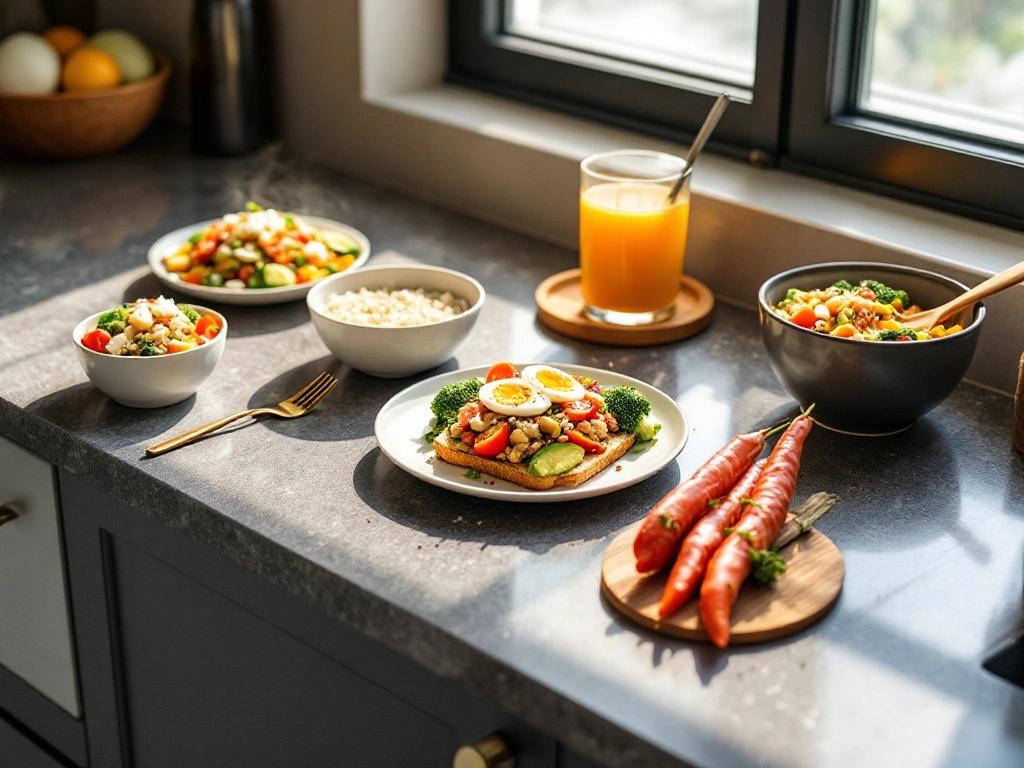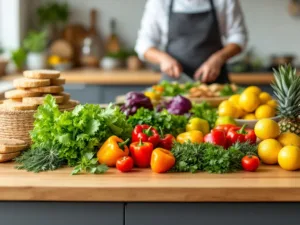Light Cooking Methods That Help You Lose Weight Quickly: A Comprehensive Guide to Healthy and Effective Weight Loss
Introduction
In a world where fad diets and extreme weight loss regimens dominate the headlines, the quest for sustainable and healthy weight loss can feel overwhelming. However, the secret to shedding pounds effectively may lie not in drastic measures but in the way you prepare your meals. Light cooking methods are emerging as a powerful tool for weight management, offering a balanced approach that prioritizes nutrition, flavor, and long-term health. This article delves into the science behind light cooking, explores various techniques, and provides practical tips to help you incorporate these methods into your daily routine. Whether you’re a seasoned home cook or a beginner in the kitchen, this guide will equip you with the knowledge to make weight loss both achievable and enjoyable.
The Science Behind Light Cooking and Weight Loss
Understanding Caloric Density and Nutrient Retention
Light cooking methods focus on preparing food in ways that preserve its nutritional value while minimizing the addition of excess calories. Unlike deep-frying or heavy sautéing, which often require large amounts of oil or butter, light cooking techniques such as steaming, grilling, and poaching use minimal fat. This reduces the overall caloric density of your meals, making it easier to maintain a calorie deficit—a key factor in weight loss.
Additionally, light cooking helps retain essential nutrients like vitamins, minerals, and antioxidants, which are often lost during high-heat or prolonged cooking processes. For example, steaming vegetables preserves their water-soluble vitamins, such as vitamin C and B vitamins, ensuring that your body receives the nutrients it needs to function optimally.
The Role of Portion Control and Satiety
Light cooking methods also promote portion control and satiety. By focusing on whole, minimally processed ingredients, these techniques help you feel fuller for longer, reducing the likelihood of overeating. For instance, a grilled chicken breast paired with a side of steamed vegetables provides a satisfying meal that is both low in calories and high in protein and fiber—two nutrients known to enhance satiety.
Light Cooking Methods for Weight Loss
1. Steaming
Steaming is one of the healthiest cooking methods, as it requires no oil and preserves the natural flavors and nutrients of food. This technique is particularly effective for vegetables, fish, and poultry.
How to Steam:
- Use a steamer basket or electric steamer.
- Add a small amount of water to the pot and bring it to a boil.
- Place the food in the steamer basket and cover with a lid.
- Steam until the food is tender but still vibrant in color.
Example Recipe: Steamed broccoli and salmon. Season with lemon juice, garlic, and a sprinkle of herbs for a flavorful, low-calorie meal.
2. Grilling
Grilling is a fantastic way to add depth of flavor to your meals without relying on heavy sauces or oils. It works well for meats, vegetables, and even fruits.
How to Grill:
- Preheat your grill to medium-high heat.
- Lightly brush the food with olive oil or a marinade to prevent sticking.
- Grill until the food is cooked through and has visible grill marks.
Example Recipe: Grilled chicken skewers with bell peppers and zucchini. Marinate the chicken in a mixture of olive oil, lemon juice, and spices for added flavor.
3. Poaching
Poaching involves cooking food gently in simmering water or broth. It’s an excellent method for preparing delicate proteins like eggs, fish, and chicken.
How to Poach:
- Bring a pot of water or broth to a gentle simmer.
- Add the food and cook until it reaches the desired doneness.
- Remove with a slotted spoon and pat dry.
Example Recipe: Poached eggs served over a bed of sautéed spinach and whole-grain toast. This makes for a nutritious and filling breakfast.
4. Baking
Baking is a versatile cooking method that requires little to no added fat. It’s ideal for preparing casseroles, roasted vegetables, and lean proteins.
How to Bake:
- Preheat your oven to the desired temperature.
- Place the food on a baking sheet or in a baking dish.
- Bake until the food is cooked through and slightly browned.
Example Recipe: Baked sweet potato wedges seasoned with paprika, garlic powder, and a touch of olive oil.
5. Stir-Frying
Stir-frying involves cooking food quickly in a small amount of oil over high heat. While it does require some oil, using a non-stick pan and healthy oils like olive or avocado oil can keep the calorie count in check.
How to Stir-Fry:
- Heat a small amount of oil in a wok or large skillet.
- Add chopped vegetables and protein, stirring constantly.
- Cook until the food is tender but still crisp.
Example Recipe: Stir-fried tofu with mixed vegetables and a light soy sauce glaze.
Practical Tips for Incorporating Light Cooking into Your Routine
Plan Your Meals in Advance
Meal planning is a cornerstone of successful weight loss. By preparing a weekly menu that incorporates light cooking methods, you can ensure that you always have healthy, low-calorie options on hand.
Invest in Quality Kitchen Tools
Having the right tools can make light cooking easier and more enjoyable. Consider investing in a steamer basket, a good-quality non-stick skillet, and a reliable food thermometer to ensure your meals are cooked to perfection.
Experiment with Herbs and Spices
One of the challenges of light cooking is keeping your meals flavorful without relying on heavy sauces or excessive salt. Experiment with herbs, spices, and citrus juices to add depth and complexity to your dishes.
Practice Mindful Eating
Light cooking is just one piece of the weight loss puzzle. Pairing it with mindful eating practices—such as eating slowly, savoring each bite, and listening to your body’s hunger cues—can enhance your results.
Conclusion
Light cooking methods offer a sustainable and effective way to lose weight without sacrificing flavor or nutrition. By focusing on techniques like steaming, grilling, poaching, baking, and stir-frying, you can create meals that are both delicious and calorie-conscious. Remember, the key to successful weight loss lies in consistency and balance. Incorporate these methods into your daily routine, experiment with new recipes, and enjoy the journey toward a healthier, happier you.
Final Advice: Start small by incorporating one or two light cooking methods into your weekly meals. As you become more comfortable, gradually expand your repertoire and explore new ingredients and flavors. With time and practice, light cooking will become second nature, paving the way for lasting weight loss and improved well-being.









Add comment